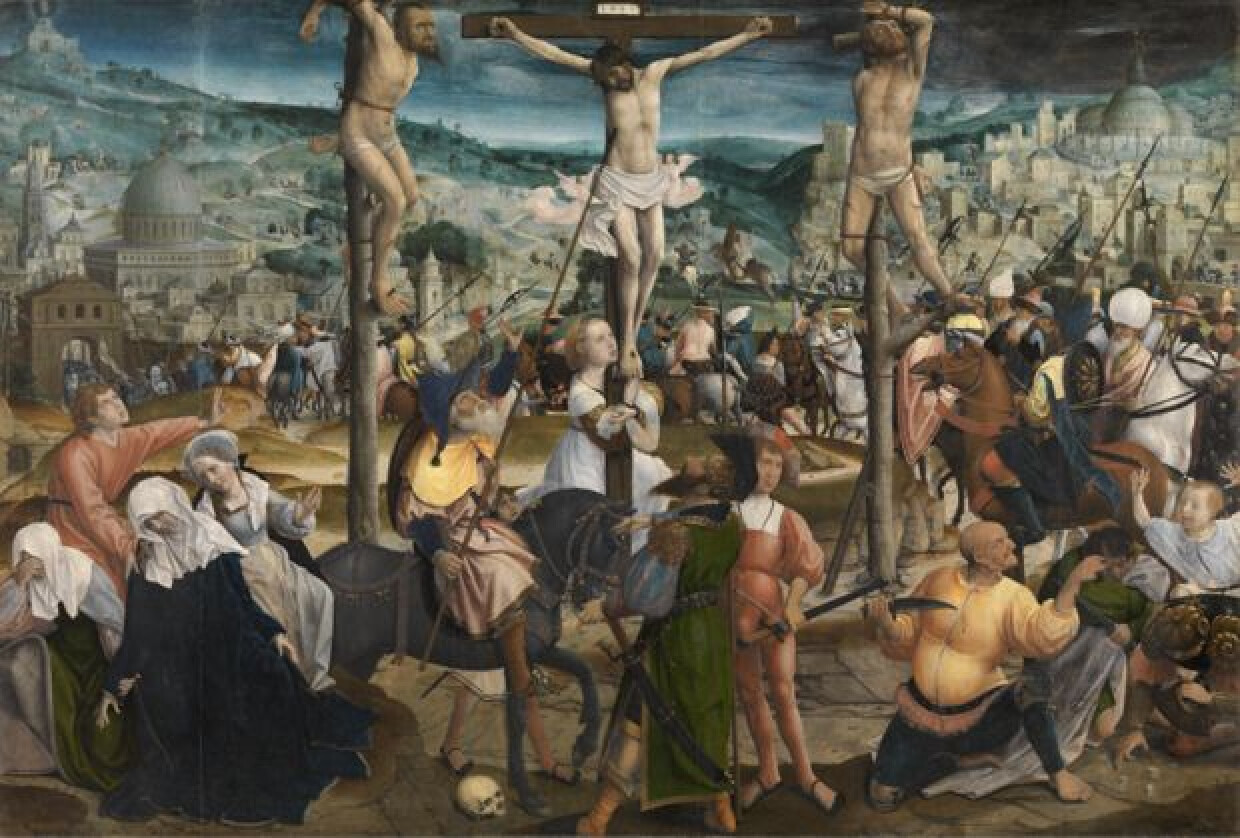Close
Manufacturer
Jan ProvoostPeriod and date
16de eeuwThe crucifixion of Jesus is shown in a wide landscape. In front, a winding procession makes its way to a city. The tight cropping and the many extras give the image a theatrical character. The scene depicts the moment that the blind centurion Longinus pierces Jesus’s side. A drop of blood falls on the centurion’s hand, he touches his eye with it, after which he can see again. At this exact moment, Jesus dies and – as described in the Bible – darkness falls. Remarkably, this is only the case for the city in the background on the right; the city on the left is spared. Thanks to the faithful rendering of the buildings, the city on the left is recognizable as Jerusalem, the holy city. It is highly likely that Jan Provoost visited this city as a pilgrim and based the cityscape in this painting on his own observations. It is possible that this Crucifixion was part of a triptych, along with two scenes from the life of Saint Catherine (currently kept at the Boijmans van Beuningen Museum in Rotterdam and the Royal Museum of Fine Arts Antwerp, KMSKA). According to the reconstruction, this triptych would have formed the altarpiece for the Jerusalem chapel in Bruges, where a splinter from the cross and a piece of silk belonging to Saint Catherine are kept as relics.
MASTERPIECE
The procession of spectators and soldiers returning to Jerusalem after the crucifixion is rich in details that will hold your attention. People talk to each other, point at Jesus and sit turned on their horses to address each other. The excitement is palpable, the whinnying of horses and the people’s chatter is almost audible.
This is in sharp contrast with Jesus being pierced in his side and uttering his last words, after which he dies. He towers serenely above the gathering and is accompanied only by the two murderers and two angels, who are holding up his loincloth. These cherubs are an important compositional element, because they are rarely depicted in the depiction of Calvary. When they do appear, they are a reference to the Eucharist. Jesus’s death on the cross is a sacrificial death, through which, according to the Christian faith, believers regain access to heaven. The Eucharist, an integral part of the liturgical mass in which bread and wine (symbolizing the body and blood of Christ) is shared with the faithful, refers to this sacrifice. This confirms that this painting must have been an altarpiece, in front of which Mass was celebrated.
